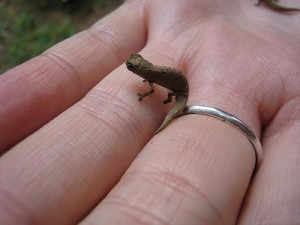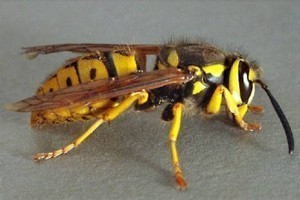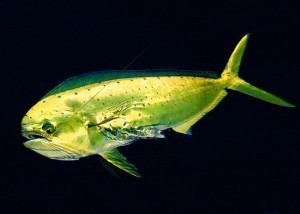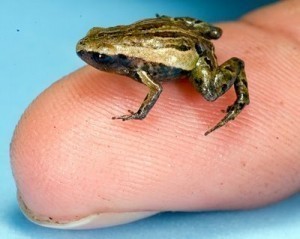Smallest Chameleon
The smallest chameleon is the Brookesia minima. It is also known as the Madagascan Dwarf Chameleon, Dwarf Chameleon, Pygmy Leaf Chameleon and by many other names. Their maximum length is 2.8 cm (1.1 in) for males and 3.4 cm (1.3 in) for females.
Range and Habitat
The Dwarf Chameleon is found in Nosy Be Island. This is on Madagascar’s northwest coast. Some species have also been seen at the Manongarivo Reserve in Madagascar. The Dwarf Chameleon resides in the island forests.
Compared with other chameleons, the creature is quite active. It can be seen moving around leaf liter and branches. The population density has been estimated at one per sq m. Even though they are the smallest chameleon, they can be quite aggressive even with each other.
Characteristics
The Dwarf Chameleon has an orbital crest over its eyes. The crest has scales shaped like triangle plates. Their heads are flat. Two rows of granular protrusions can be seen at their back. Their color is gray brown. Some however, have yellow stripes. Males are usually slimmer that the female. The male Dwarf chameleon also has a hemipenial bulge on the tail.
Reproduction and Cultivation 
The average clutch has a couple of eggs. However, scientists still do not know how the creatures reproduce.
Successful captive breeding is difficult. Due to their territorial nature, housing must be implemented at a very young age. The enclosure has to be 16" x 16" x 16" minimum.
Soil or leaf litter must be present. The horizontal specifications are more vital because the creature stays near the ground. Their eggs are very small and can be hard to find.
Species Similar to the Dwarf Chameleon
Brookesia minima are included in the species cluster with B. tuberculata, B. dentate and other Dwarf Chameleons. There are many other species that belong to the group.
However, not all agree with this grouping. Some researchers believe that the B. peyrierasiand and B. tuberculata are not the same as B. minima. There are researchers who believe there are morphological differences between the creatures.
Changing Color
The Dwarf Chameleon changes color to blend in with the environment. Other species change colors when courting females or trying to scare away an enemy. The chameleon will also alter its color when it is scared or angry.
While the Dwarf Chameleon is regarded as the smallest chameleon today, some Brookesia genus members may be of an even smaller size. However this has yet to be verified.





